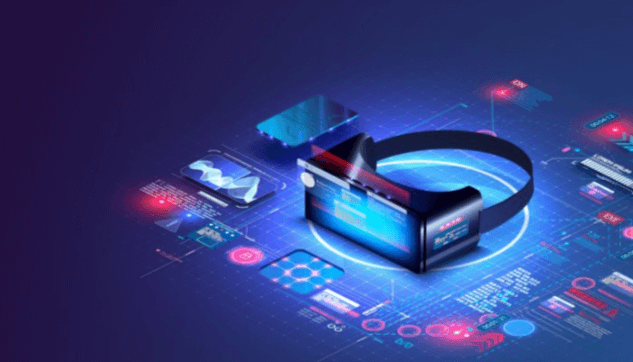How are virtual and augmented reality technologies transforming professional training and education?

Introduction
Virtual and augmented reality (VR and AR) technologies are no longer confined to the realms of gaming and entertainment. These cutting-edge innovations are making significant inroads into professional training and education, transforming traditional learning methods into immersive and interactive experiences. This article explores how VR and AR are revolutionizing professional training and education, enhancing skill development, and creating new opportunities for learners and educators alike.
Understanding Virtual and Augmented Reality
Virtual reality creates a completely digital environment that users can interact with, often through headsets and controllers. Augmented reality overlays digital information onto the real world, typically using smartphones or AR glasses. Both technologies offer unique ways to engage with content, providing hands-on experiences that traditional methods cannot match.
Benefits of VR and AR in Professional Training
VR and AR offer numerous benefits in professional training, including enhanced engagement, improved retention, and the ability to simulate real-world scenarios. These technologies allow trainees to practice skills in a safe, controlled environment, reducing the risk of mistakes in real-life situations.
Immersive Learning Environments
One of the most significant advantages of VR and AR is their ability to create immersive learning environments. These environments enable learners to engage deeply with the material, making abstract concepts tangible and easier to understand.
Enhanced Skill Development
By providing hands-on, practical experiences, VR and AR help learners develop and refine their skills more effectively than traditional training methods. This is particularly valuable in fields that require precision and practice, such as surgery, engineering, and aviation.
Simulating Real-World Scenarios
VR and AR can simulate real-world scenarios that would be difficult, dangerous, or expensive to recreate in a traditional training setting. For example, pilots can practice emergency procedures in a VR flight simulator, or medical students can perform virtual surgeries.
Cost-Effectiveness and Efficiency
While the initial investment in VR and AR technology can be significant, these tools can ultimately save money by reducing the need for physical materials and travel. They also allow for more efficient training, as learners can practice at their own pace and revisit difficult concepts as needed.
Customizable Learning Experiences
VR and AR offer customizable learning experiences tailored to individual needs. Educators can adjust the difficulty level, provide instant feedback, and track progress, ensuring that each learner receives the support they need to succeed.
Increasing Accessibility in Education
These technologies can make education more accessible to a broader audience. For example, students in remote areas can access high-quality training programs, and individuals with disabilities can benefit from tailored learning environments.
Collaborative Learning Opportunities
VR and AR facilitate collaborative learning by allowing multiple users to interact in a virtual space. This fosters teamwork and communication skills, which are essential in many professional settings.
Applications in Various Industries
VR and AR are being applied across various industries, including healthcare, manufacturing, and military training. Each sector benefits from the unique capabilities of these technologies to enhance learning and performance.
Healthcare Training
In healthcare, VR and AR are used to train medical professionals in surgical procedures, patient care, and emergency response. These technologies provide a risk-free environment for practicing complex skills and techniques.
Engineering and Manufacturing
Engineers and manufacturers use VR and AR to design, test, and troubleshoot products and processes. This allows for more accurate prototypes and reduces the time and cost associated with physical testing.
Military Training
The military uses VR and AR to simulate combat scenarios, train soldiers in tactical skills, and develop decision-making abilities under pressure. These simulations can replicate a wide range of environments and situations, preparing personnel for real-life challenges.
Education and Academia
In educational institutions, VR and AR are used to teach subjects such as history, science, and art. These technologies bring subjects to life, making learning more engaging and memorable.
Challenges and Limitations
Despite their many advantages, VR and AR technologies also face challenges and limitations. These include high costs, technical issues, and the need for specialized skills to develop and maintain content.
Addressing Technical Challenges
Technical challenges such as hardware limitations, software compatibility, and the need for high-speed internet can hinder the adoption of VR and AR. Solutions include ongoing research and development to improve technology and infrastructure.
Ensuring Data Privacy and Security
As with any digital technology, data privacy and security are critical concerns. Organizations must implement robust measures to protect user data and ensure the secure use of VR and AR systems.
Future Prospects of VR and AR in Education
The future of VR and AR in education looks promising, with ongoing advancements expected to make these technologies more accessible and effective. As costs decrease and technology improves, more institutions will likely adopt VR and AR for training and education.
Innovations on the Horizon
Future innovations may include more sophisticated haptic feedback, better integration with artificial intelligence, and improved user interfaces. These advancements will further enhance the learning experience and expand the possibilities for VR and AR in education.
Conclusion
Virtual and augmented reality technologies are transforming professional training and education by providing immersive, interactive, and customizable learning experiences. While challenges remain, the potential benefits make VR and AR valuable tools for enhancing skill development and educational outcomes. As these technologies continue to evolve, their impact on training and education will only grow, offering new opportunities for learners and educators worldwide.
Frequently Asked Questions
How do VR and AR differ in educational applications? VR provides a completely immersive digital environment, while AR overlays digital information on the real world. Both have unique applications in education, with VR often used for fully immersive simulations and AR for enhancing real-world experiences.
What are the cost implications of implementing VR and AR in training? While the initial costs can be high, VR and AR can save money in the long run by reducing the need for physical materials, travel, and time spent on training. They also offer scalable solutions that can be customized to different training needs.
Can VR and AR be used for remote learning? Yes, VR and AR are excellent tools for remote learning, offering immersive and interactive experiences that can be accessed from anywhere. This makes high-quality training accessible to individuals in remote or underserved areas.
What industries benefit most from VR and AR training? Healthcare, engineering, manufacturing, and the military are among the industries that benefit significantly from VR and AR training. These technologies are particularly useful in fields that require precision, practice, and the ability to simulate real-world scenarios.
How do VR and AR enhance collaborative learning? VR and AR facilitate collaborative learning by allowing multiple users to interact in a shared virtual space. This enables teamwork and communication skills development, which are essential in many professional environments.
What are the main challenges of using VR and AR in education? The main challenges include high costs, technical issues, and the need for specialized skills to create and maintain VR and AR content. Addressing these challenges requires investment in technology, infrastructure, and training for educators.




